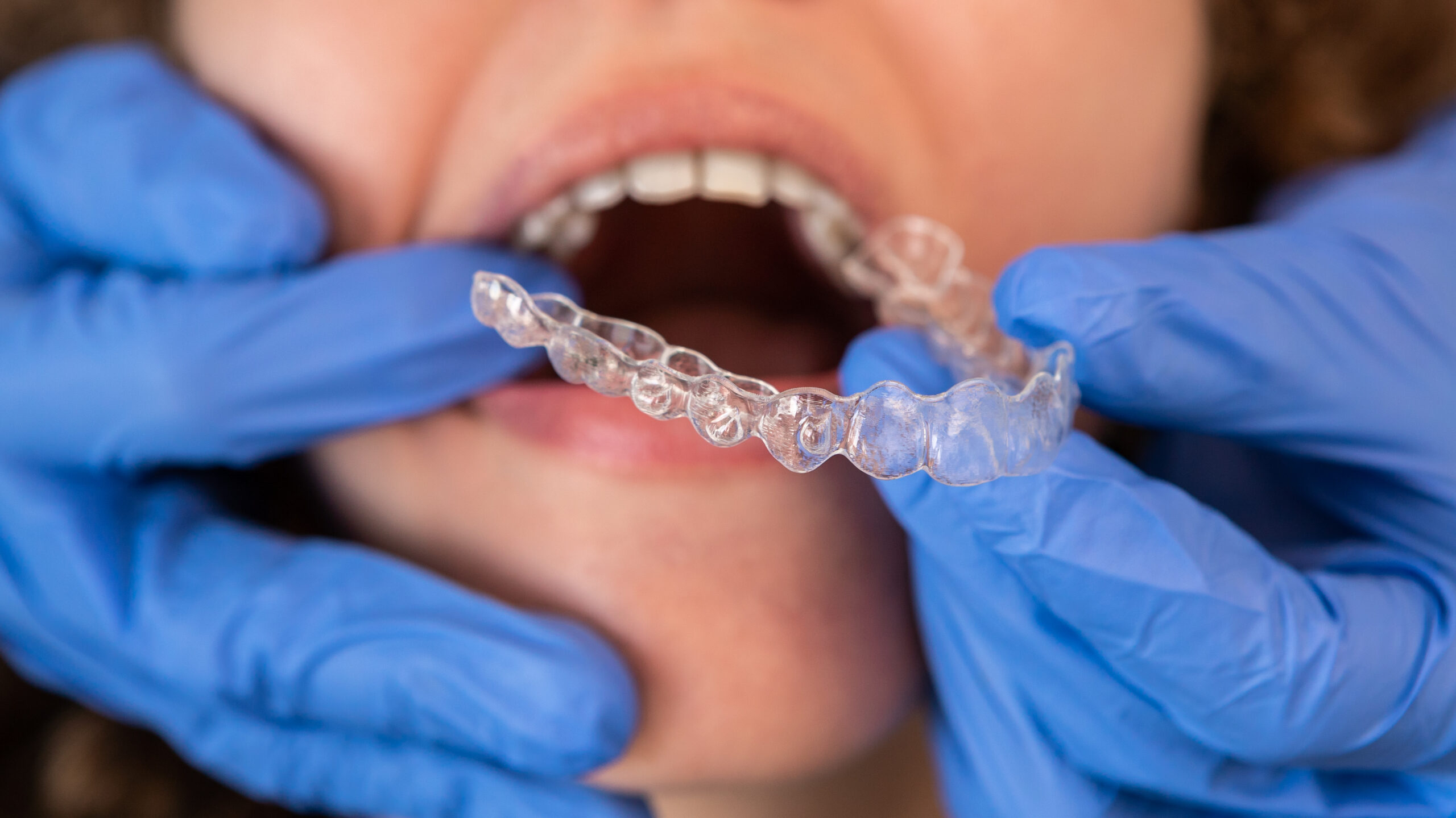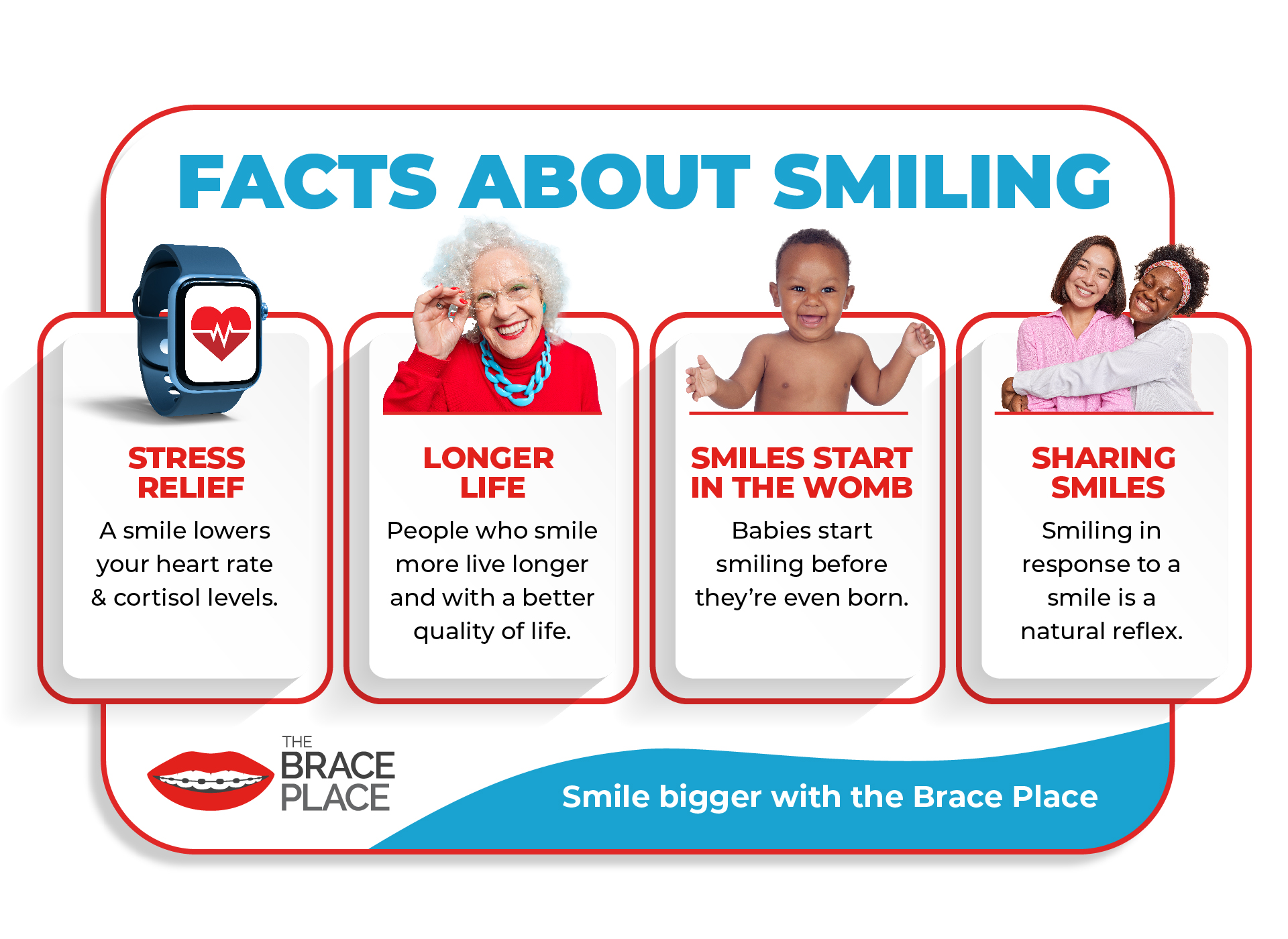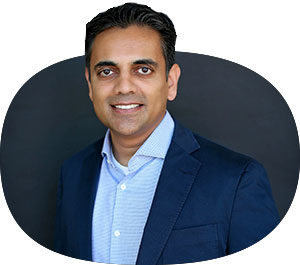At first glance, online clear aligners look like they offer many benefits over clear aligner treatment with an orthodontist. But did you know that the risks and limitations of online clear aligners outweigh any perks?
Clear aligners vs Invisalign
You’ll find many differences between online clear aligners vs Invisalign with an orthodontist. Not to mention a few details that could make you think twice about whether online teeth straightening will effectively fix your orthodontic issues and fulfill your smile goals.
Dr. Patel and the team at The Brace Place want to lay out some food for thought so you can make the best choice for your teeth. In this post, we’ll talk about:
- Overall costs and value
- The diagnostics you get/don’t get
- Insurance coverage
- Treatment limitations
- Length of treatment
- Technology and materials used
- Professional oversight or lack thereof
Overall costs and value
As mentioned earlier, one of the draws of online teeth straightening is the initial sticker price. Many direct-to-consumer packages have a lower up-front price than treatment from an orthodontist. But comparing online clear aligners vs Invisalign solely on pricing is like comparing apples to oranges.
You see, the sticker price of at-home aligners doesn’t always include the price of things like:
- X-rays
- Diagnostic records
- Extra impression kits
- Extra aligners for refinements during treatment
- Attachments or accessories
- A retainer
With online clear aligners, you run the risk of surprise costs, with a total bill that ends up the same or more as treatment with an orthodontist. However, Invisalign with an orthodontist like Dr. Patel includes the cost of diagnostics, extra aligners for fine-tuning treatment, accessories, and the first set of retainers. You also get the invaluable professional oversight of an orthodontic specialist from beginning to end. At The Brace Place, you benefit from Dr. Patel’s 20+ years of orthodontic experience treating thousands of Invisalign and braces patients.
The diagnostics you get/don’t get
The first steps in getting online clear aligners are in your hands. What does this mean? Essentially, you’re in charge of your diagnostics — a critical step in ensuring your clear aligner treatment is accurate.
Most DIY brands ask you to fill out a questionnaire or take your own teeth impressions. This is meant to take the place of a one-on-one chat with an orthodontist and professionally-conducted diagnostics.
At The Brace Place, we use high-tech digital diagnostic equipment like the iTero scanner, which results in a more precise picture of your teeth than goopy impression molds you’d do at home. We also take digital x-rays to ensure we know the state of your teeth inside and out. X-rays are super important at the start of teeth straightening treatment for several reasons. Moving teeth involves shifting teeth within the jawbone, so it’s important to see teeth root and see how teeth currently sit below the gumline. X-rays also allow you and the orthodontist insight into any underlying oral health issues (cavities, gum disease) that could impede teeth straightening treatment.
Insurance coverage
It’s true that many insurance packages cover orthodontics, so your out-of-pocket costs are lower. But keep in mind that some insurance companies offer less coverage for treatment that an orthodontist or dentist doesn’t directly supervise. While some mail-order clear aligner treatments now include some virtual dentist oversight, your insurance provider might decline coverage or grant only a small portion due to online treatment’s history of customer complaints.
If your insurance does happen to cover your online clear aligners, consider the added inconvenience of making the claim yourself — and sometimes only after paying for your entire treatment. The great thing about Invisalign with an orthodontist is that they handle your claims for you, directly billing your insurance provider so you don’t have to do any paperwork.
Also, keep in mind that when an online brand says they offer professional oversight, the supervision of a “dental expert” might not be the same as oversight from a credentialed dentist or orthodontist. Invisalign with Dr. Patel ensures certified professional oversight that qualifies when it comes to your insurance.
Treatment limitations with online clear aligners vs Invisalign
First, we should mention that the gold standard of clear aligners — Invisalign — isn’t available as a DIY treatment, only with a dentist or orthodontist. So if you want the most proven clear aligner treatment on the market for peace of mind, you won’t find that in a mail-order system.
Next, most online clear aligners only treat mild to moderate teeth alignment issues that don’t require complex tooth movements. You won’t qualify for online kits if you have larger gaps, severely misaligned crowding or twisting, buck teeth, or a severe overbite, underbite, or crossbite. These types of tooth and jaw movements need direct diagnosis, treatment planning, and supervision by an orthodontist for a successful outcome. Mail-order aligners also don’t offer treatment with attachments — accessories needed for jaw alignment and more complex tooth movements.
One of the best benefits of Invisalign? In the hands of an experienced orthodontist like Dr. Patel, complex cases can result in amazing outcomes. Even serious issues that were only treatable with braces in years past. The cherry on top? Dr. Patel is a Gold+ Invisalign Provider, meaning he has extensive experience successfully treating patients with Invisalign.
Length of treatment
We understand that most people would prefer as short a treatment time as possible — who doesn’t want a stunning smile asap? Many online kits lean on this, advertising quicker treatment times than orthodontist-led treatment. Some online systems even say results in as little as 4-6 months.
While this is enticing, remember that these online systems only treat mild to moderate issues which contributes to a shorter treatment time anyway. Top of mind when it comes to the length of your treatment? Everyone’s teeth are different. From their orthodontic issues to the health and strength of their teeth, no two sets of teeth are the same. Treatment time largely depends on individual oral factors that are best assessed and planned for by orthodontic consultation and oversight.
Another caution against overly quick treatment times? The science of orthodontic treatment needs time for the breakdown and rebuilding of cells as teeth shift and secure into their new positions. Overly quick treatment time can force aggressive tooth movements that don’t allow your body to build and heal or lead to tooth and oral structure damage. Sometimes this damage needs repair or surgery by a professional.
So when weighing online clear aligners vs Invisalign treatment times, we suggest prioritizing custom, longer treatment with a professional over fast results for the overall health of your teeth.
Technology and materials used
Mail order aligner systems might seem like the most innovative option because they’ve gained popularity in just the past few years. But when it comes to materials, most use generic plastic, not purpose-designed for straightening teeth. One of the biggest benefits of Invisalign is their patented SmartTrack™ material — specially designed for orthodontic aligners.
Many online clear aligners also rely on physical molds to get your teeth impressions. This method, especially in the hands of a non-dental professional, can be difficult to get right, requiring multiple tries and still produce aligner trays that don’t fit.
Modern dental and orthodontic offices like The Brace Place instead use digital impression tools and software for more accurate imaging and treatment planning. Your Tulsa and Claremore orthodontist uses the latest proven, high-tech tools and techniques to ensure the most advanced treatment for our patients. For Invisalign, we use the iTero® digital scanner to get an accurate 3D picture of your teeth and help plan treatment that’s a perfect fit.
Experienced, Professional oversight — or lack thereof
Earlier, we mentioned that there might be a difference between “dental expert” oversight and certified orthodontist/dentist supervision in the eyes of your insurance provider. The same goes for your actual treatment and progress. With at-home treatment, the bulk of it is up to you, with some help from a dental expert, sometimes of unknown expertise.
Treatment under a certified specialist in orthodontics is backed by professional knowledge of dental anatomy and years of experience in orthodontic procedures. What type of training does an orthodontist have? A certified orthodontic specialist like Dr. Patel has gone through undergraduate school, then dental school, then finally schooling to specialize in orthodontics.
He is also board certified, which means he has successfully passed rigorous exams by the American Board of Orthodontists (ABO). To maintain his board certified status, Dr. Patel must also take a recertification exam every 10 years. The process to become board certified by the ABO takes 5-10 years and Dr. Patel is in an elite group of orthodontists — only 1 in 3 orthodontists is board certified.
Dr. Patel keeps his professional skills and knowledge up-to-date with his dedication to continuing studies. He is also a member of professional organizations, including the American Association of Orthodontists, American Dental Association, Oklahoma Dental Association, Tulsa County Dental Society and Rogers County Dental Society.
Are online clear aligners safe?
The American Association of Orthodontists warns consumers against using online clear aligners because of the potential damage to teeth and gums. Without direct supervision by an orthodontics specialist, it may take a long time for a customer to realize their aligners aren’t working or fitting correctly. And by then, serious or long-term damage to the teeth and gums might have started.
Conversely, Invisalign treatment with an orthodontist comes with the safety of professional experience you can count on: from expertly diagnosing your orthodontic issues to creating a personalized treatment plan to checking in on your progress and fine tuning along the way. Online clear aligners don’t come with the same level of accountability toward your oral safety as treatment with an orthodontist.
Orthodontists straighten teeth safely, with results that fulfill a patient’s unique aesthetic and functional goals.
Getting Beautiful, Straight Teeth with Confidence in Tulsa and Claremore, OK
More informed about the differences between online clear aligners vs Invisalign? The award-winning Brace Place team is happy to answer any outstanding questions you may have at a free initial consultation.
Contact us to visit our Tulsa or Claremore office and get started on a smile transformation knowing you’ll get amazing results!






























